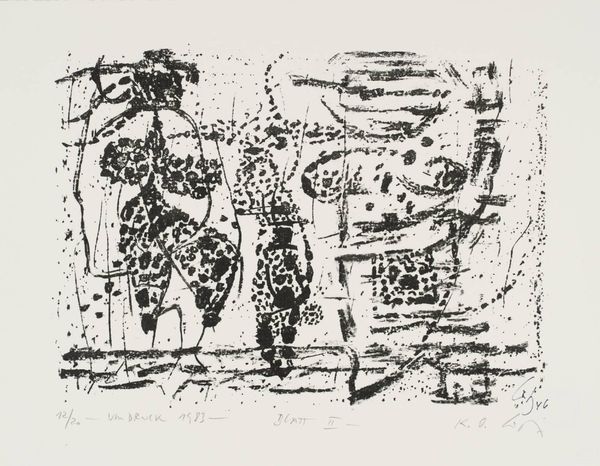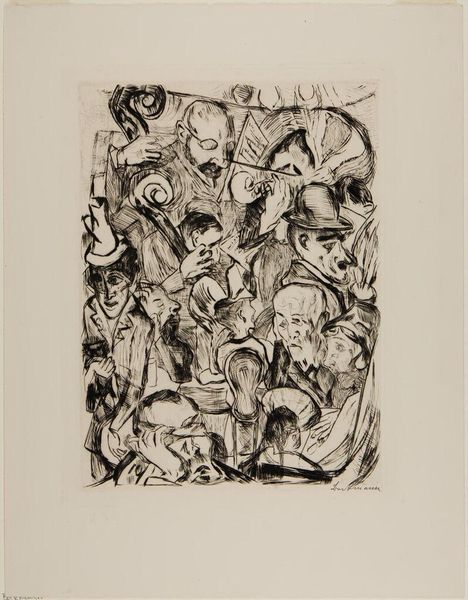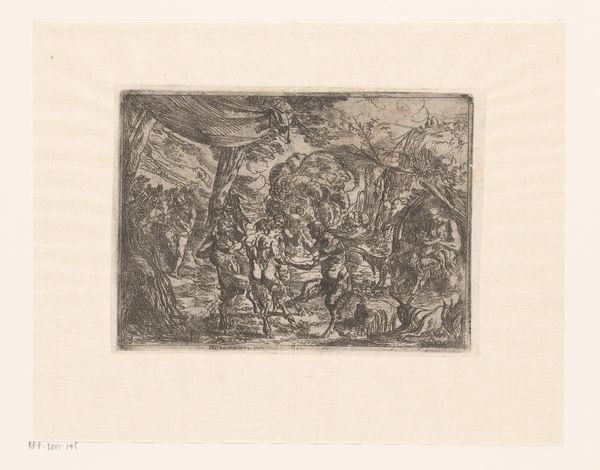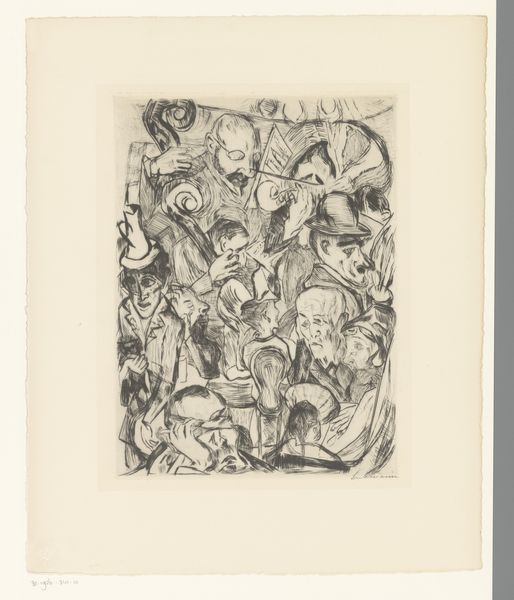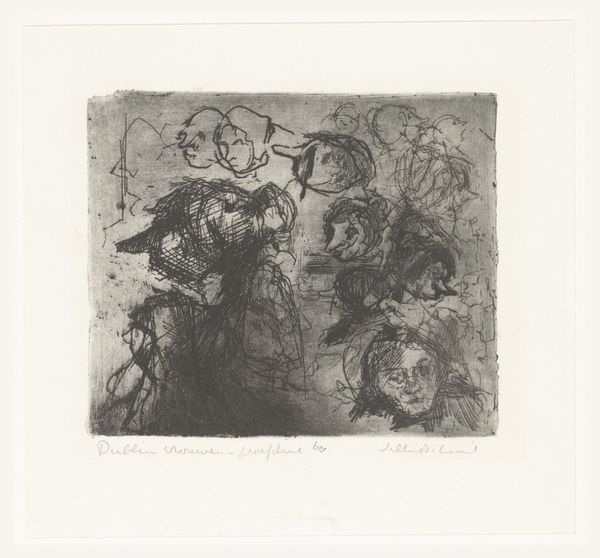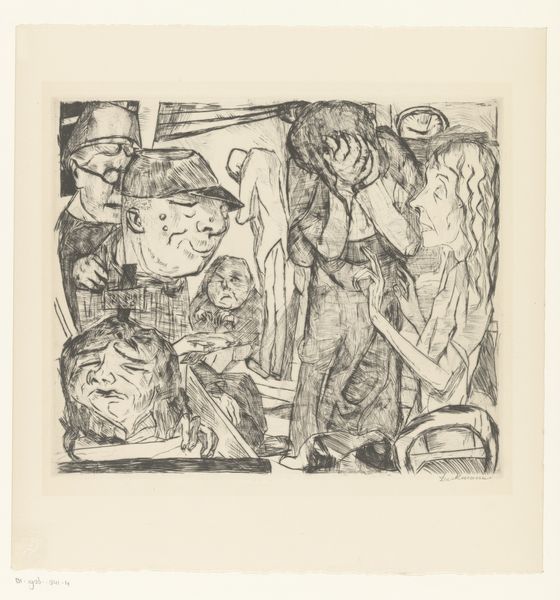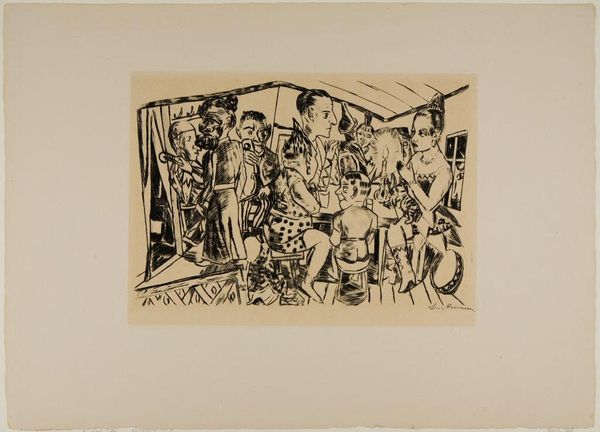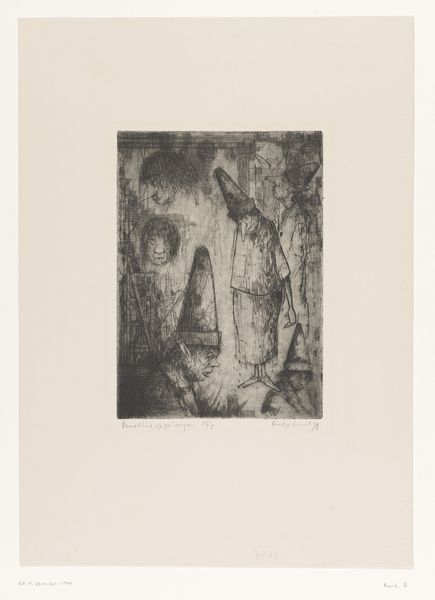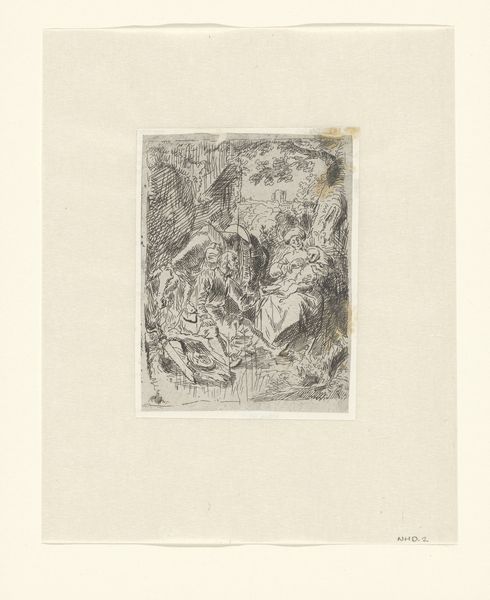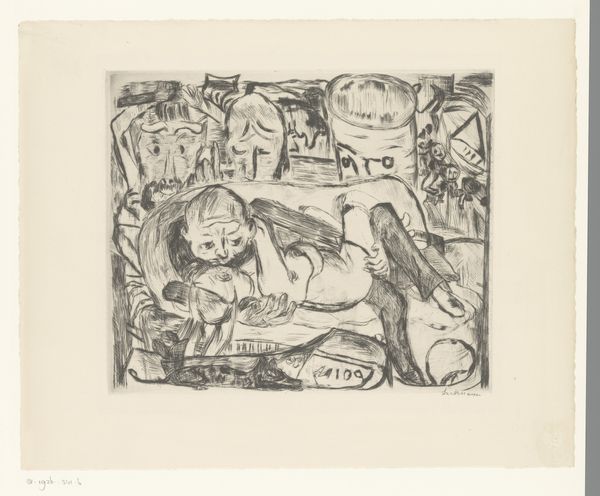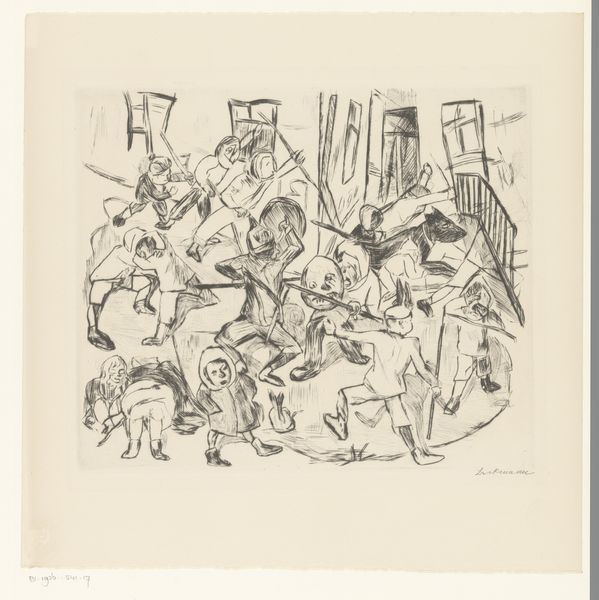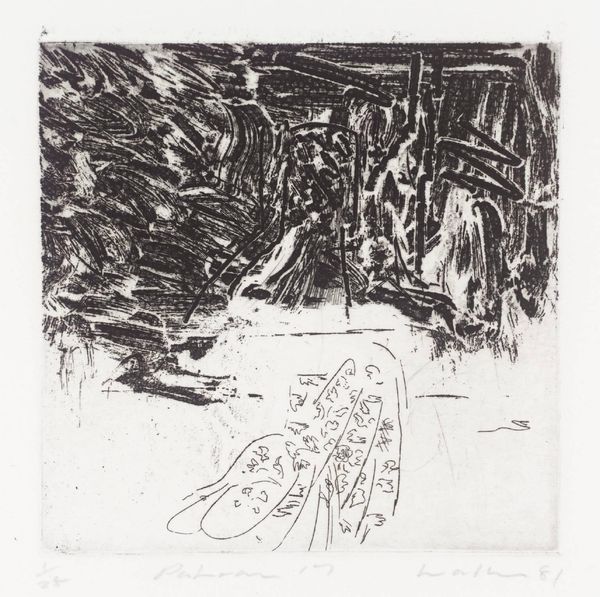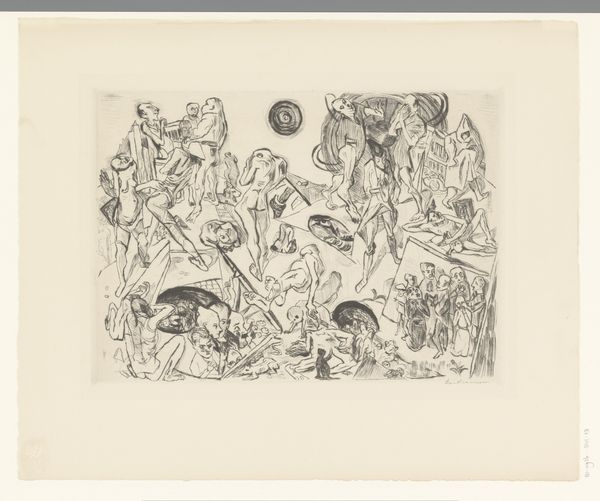
drawing, graphite
#
drawing
#
narrative-art
#
figuration
#
graphite
#
history-painting
#
modernism
Dimensions: overall (approximate): 56.3 x 76.5 cm (22 3/16 x 30 1/8 in.)
Copyright: National Gallery of Art: CC0 1.0
Curator: Well, this graphite drawing immediately strikes me as possessing a sense of somber reflection. The monochromatic palette and sketchy lines contribute to a feeling of contemplative seriousness. What are your thoughts? Editor: That feeling is quite deliberate. We’re looking at "Study for 'After Blake's Job'," a 1966 piece by Benton Spruance. Spruance was deeply engaged with social justice and often addressed existential questions in his art. This drawing directly references William Blake's illustrations of the Book of Job. Curator: Ah, that explains the distinct symbolic language woven throughout. Notice the figures gathered, perhaps mourning, but there's also a sense of procession or even judgement in their postures. It clearly aims to be more than just illustrative; it invites interpretation. Editor: Precisely. Blake’s work already tackles themes of suffering, faith, and redemption. By engaging with it directly, Spruance invites us to consider how these themes resonate within the context of the 20th century, marked by its own intense periods of upheaval and doubt. Curator: It's a fascinating dialogue across time and artistic vision. Spruance, deeply rooted in his Quaker faith and convictions, perhaps saw parallels between Job's trials and the modern human condition, making the artistic tradition into a sort of historical conversation. Editor: Yes, and I see symbols here – beyond just Blake. There is that horse near a rose…perhaps the Apocalypse linked with rebirth. But there are multiple bodies in apparent distress. Does this reference Job or his own reckoning with more modern examples of human misery and struggle? The loose graphite evokes more a dream than solid truth. Curator: This study becomes a meditation, really. A bridge between Blake’s visionary intensity and Spruance's grappling with the complexities of his own era. Editor: Precisely, Benton Spruance takes inspiration to find his own voice by grappling with shared ideas across time. Curator: It asks us what we learn from both their trials, imagined and real, as a constant feature of human experience. Editor: Right, by appropriating visual vocabulary Spruance encourages a deep dive into questions of morality.
Comments
No comments
Be the first to comment and join the conversation on the ultimate creative platform.
